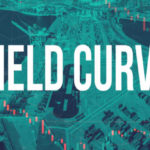
A vineyard in Elqui Valley, in the Coquimbo region, Chile. By Ksenia Ragozina @ Shutterstock.com
History moves slowly, then all at once. With that in mind, I am withholding judgment on what the heck is going on in North Korea, other than to note that it could be big, or it could be not much at all. For the geopolitical phrenologists among you, here is the text of the Panmunjom Declaration, which in lofty but airy terms, was cosigned by South Korean President Moon Jae-in and North Korean dictator Kim Jong-un. Let’s hope for something good!
Until then, let’s talk wine.
As Dick has mentioned, I left my job bleating about US foreign policy to open a Latin American wine bar, Ruta del Vino, in DC. When I got into wine, however, it was very much as a Francophile. I had studied French for years, and worked in a local bistro as a server and trainer on wines. This was the late 1990s and early aughts. My palate tends toward freshness, acid, and linearity in whites, and toward savory, mineral reds. My go-tos back then were Vacqueyras and Saumur-Champigny for reds, Quincy and other Loire appellations for whites. The appreciation in value of these regions over the intervening years suggests I may have been onto something, in terms of value.
So with my oenological cards on the table, let me share two secrets with you about Latin American wines.
Look for Acronyms in Chile
For decades, Chile has been typecast as strictly a value-producing country. You pretty much couldn’t go wrong with Chilean Sauvignon Blanc for a wedding, or big reception, but nobody really looked for serious, expensive wines from Chile. In recent years, a constellation of forces have combined to set Chile apart for its small producers and unusual varietals.
One way small producers in Chile have gotten smart is by founding MOVI, the Movimiento de Viñateros Independientes, or Movement of Independent Winemakers, has helped smaller producers pool and defray some of the larger sunk costs of producing and exporting wine in Chile. Many producers can’t fill all of their own shipping containers, for example, so MOVI has served as a vehicle for coordination and cooperation among Chile’s independent wine producers. We’ve had terrific success at Ruta with the cool-climate Syrah from Villard, in the Casablanca Valley, just a few miles from the Pacific, and a short drive from Santiago. This Syrah often surprises people for being medium-bodied, texturally almost more like a New World Pinot Noir, with notes of cassis, wild strawberries, and a smoky note in the background.
The other acronym to look out for in Chile is VIGNO, a riff on the Spanish word vino with the G added to signify old-vine Carignan, which must comprise at least 65% of the blend. VIGNO is a self-designated appellation, with producers utilizing dry-farmed vines in the Maule region of Southern Chile.
VIGNO wines are not cheap, but they are absolutely thrilling. For reasons that escape me, the Powers that Be in Chile decided decades ago that they were going to try to make Carmenere their Malbec: a grape that could serve as a brand for Chile and open international markets to the breadth of their wines. But if Chile needed a grape that starts with C to call their own, they could have done better with Carignan, or even Cinsault (another story).
The Carignan wines made under the VIGNO label have thrilling fruit, structure, and persistence. In my view, many of them far outshine the wines of famous appellations of the Southern Rhône in France as equal matchups, to say nothing of comparing them while controlling for price. These wines would do terrifically as replacements for Châteauneuf-du-Pape on the table or in some cases, in the cellar. VIGNO wines would do great with beef or lamb, as well as gamier meats like boar or venison. The thought of the Garcia & Schwaderer (renamed P.S. Garcia in later vintages) VIGNO on the table on a chilly fall day with brisket or venison steaks is enough to make my mouth water.
Uruguay: Possibly the Most Exciting Wine Producing Country in Latin America
Speaking of beef, Uruguay might be the most exciting wine-producing country in Latin America. A small country shaped by waves of immigration from Italy and Spain, wedged between Brazil and Argentina, Uruguay is home to more cows than human beings. Not coincidentally, it is the world’s largest consumer of beef per capita. And let’s be honest: you’re going to have to wash all of that parrillada down with something, right?
By and large, to the extent Uruguay is known to the outside wine world, it is for Tannat, a grape that emigrated from Madiran in France, where it traditionally made teeth-staining, oppressively tannic wines with low fruit. These days, the Uruguayans are making a range of styles of Tannat, from fruity wines reminiscent of Cru Beaujolais to the massive, ripe, and mouth-blackening Single Vineyard “B6” Parcel Tannat of Bodega Bouza. Uruguay is also growing as a producer of Albariño in a number of regions, a result of immigration from Galicia, where the grape has garnered its highest praise.
In short, there is a lot to be excited about when it comes to Latin American wines. There is still a lot of dubious wine out there from Latin America, but one of the reasons we opened Ruta was the feeling that with a careful editor, the wines of Latin America by themselves could easily comprise a complete and satisfying wine list. Whether we’ve proven the point is something we’ll have to leave to others to judge!





